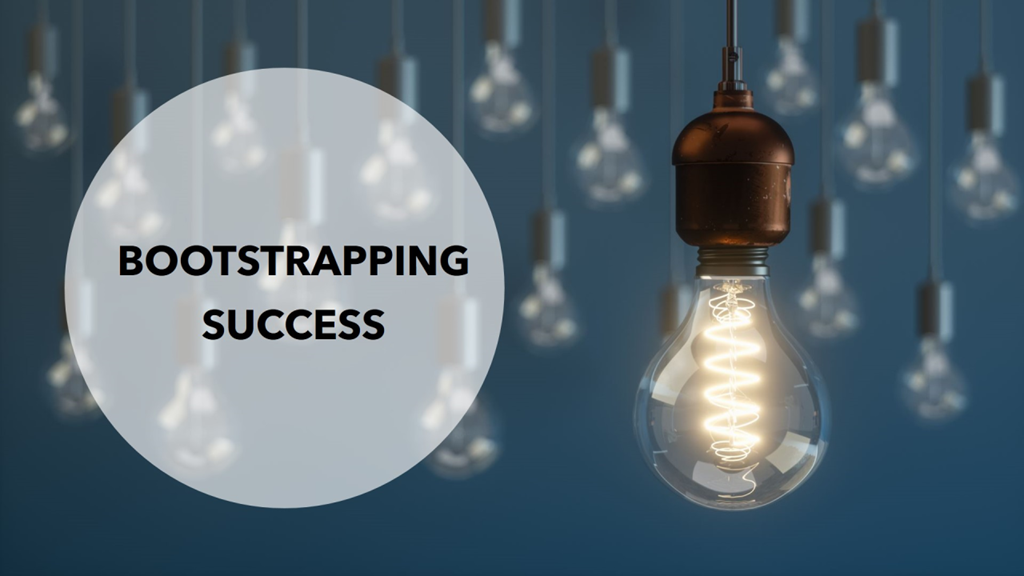In the glamorous world of startups, the spotlight often shines brightest on those raising massive venture capital rounds, boasting exponential user growth, and dominating headlines. But beneath the surface, a different kind of success story is unfolding – one of quiet determination, shrewd resourcefulness, and sustainable growth. This is the path of “silent scaling” for bootstrapped startups.
Bootstrapping, the act of building a company with self-funding and revenue, is often seen as the road less traveled, fraught with challenges. However, it forces a discipline and ingenuity that venture-backed counterparts often lack. Silent scaling takes this ethos a step further: it’s about achieving significant, lasting growth without the fanfare, the exorbitant marketing budgets, or the relentless pressure to appease external investors. It’s about building a resilient business from the ground up, prioritizing profitability, customer value, and organic expansion.
This article will delve into the core principles and actionable strategies for bootstrapped startups to achieve silent, yet formidable, scaling. We’ll explore how to leverage constraints into advantages, build a solid foundation, and expand your reach while maintaining control and financial independence.
What Exactly is Silent Scaling?
Silent scaling isn’t about hiding your success; it’s about focusing on the intrinsic value of your product or service and allowing that value to drive growth. Unlike the “growth at all costs” mentality often seen in venture-backed companies, silent scaling prioritizes:
- Profitability from day one (or very early on): Every dollar earned is reinvested back into the business, fueling self-sustained growth.
- Organic and sustainable growth channels: Relying heavily on word-of-mouth, referrals, content marketing, SEO, and product-led growth rather than paid advertising.
- Lean operations and efficiency: Minimizing waste, automating processes, and keeping overhead low.
- Customer retention and loyalty: Building strong relationships with existing customers to foster repeat business and advocacy.
- Controlled expansion: Growing at a pace that the business can comfortably support, avoiding burnout and overextension.
Think of companies like Basecamp, Mailchimp (pre-acquisition), and Plenty of Fish (pre-acquisition). These giants started bootstrapped, scaled immensely, and for a long time, did so without making much noise, proving that sustainable, organic growth can lead to extraordinary outcomes.
Why Silent Scaling is a Superpower for Bootstrapped Startups
For startups operating on limited capital, silent scaling isn’t just an option; it’s a strategic imperative that transforms constraints into competitive advantages:
- Financial Independence & Control: Without external investors, founders retain full ownership and control over their vision, direction, and profits. This allows for long-term decision-making based on core values rather than quarterly projections.
- Reduced Risk: By prioritizing profitability and lean operations, bootstrapped startups are less vulnerable to market downturns or the drying up of funding rounds. They build a robust financial foundation that can weather storms.
- Enhanced Product-Market Fit: The necessity to generate revenue from the start means a relentless focus on building something customers genuinely need and are willing to pay for. This leads to a stronger, more validated product-market fit.
- Sustainable Growth: Organic growth channels create a compounding effect. Loyal customers become advocates, content continues to attract new users, and automated systems free up time for strategic development, leading to steady, durable expansion.
- Higher Profit Margins: A lean operational structure and a focus on efficient customer acquisition mean higher profit margins, which can be reinvested or enjoyed by the founders.
- Authenticity and Trust: Companies that grow organically often build a reputation for authenticity and reliability, as their growth is driven by genuine value rather than aggressive marketing.
Related: How Does Marketing Influence the Competitiveness of an Organization?
The Core Strategies for Silent Scaling

Achieving silent scale requires a deliberate and disciplined approach across various facets of your business.
-
Relentless Focus on Profitability and Unit Economics
For a bootstrapped startup, cash flow is oxygen. From day one, every decision must be viewed through the lens of its impact on profitability and unit economics.
- High-Margin Products/Services: Prioritize offerings that inherently have higher profit margins. This provides more capital to reinvest for growth.
- Cost Control & Frugality: Question every expense. Can a task be automated? Is this tool truly essential? Can a cheaper alternative suffice? Embrace a culture of extreme cost-consciousness.
- Early Monetization: Don’t wait to monetize. Find ways to generate revenue from your product or service as early as possible, even with an MVP (Minimum Viable Product). This provides immediate feedback and cash.
- Optimized Pricing Strategy: Continuously test and optimize your pricing. Ensure it reflects the value you provide and covers your costs while remaining competitive. Consider tiered pricing or add-ons for upsells.
-
Master Organic Growth Channels (SEO, Content, Referrals)
Since significant paid advertising budgets are typically out of reach, excelling at organic acquisition is paramount.
- Search Engine Optimization (SEO): Become an authority in your niche. Conduct thorough keyword research to understand what your target audience is searching for. Create high-quality, comprehensive, and genuinely helpful content (blog posts, guides, tutorials) that answers those questions. Optimize your website for technical SEO, mobile-friendliness, and fast loading speeds. This is a long-term game but yields compounding returns.
- Content Marketing: Beyond just SEO, create content that establishes your expertise and builds trust. This could be thought leadership articles, case studies, webinars, or useful tools. Distribute this content through relevant communities, forums, and social media (organically, not paid).
- Referral Programs & Word-of-Mouth: Your happiest customers are your best marketers. Implement clear and attractive referral programs that incentivize existing users to bring in new ones. Focus on delivering an exceptional product and customer experience that naturally encourages word-of-mouth recommendations.
- Community Building: Foster a sense of community around your product or brand. This could be a dedicated forum, a Slack channel, or active engagement on social media. A strong community provides support, collects feedback, and becomes a powerful source of advocacy.
-
Automation and Systemization
Scaling silently means doing more with less. Automation is the key to achieving this efficiency.
- Automate Repetitive Tasks: Identify recurring tasks in customer support, marketing, sales, and operations that can be automated using software tools (CRM, email marketing platforms, Zapier, etc.). This frees up valuable human resources for higher-value activities.
- Standardize Processes: Document your workflows and create standard operating procedures (SOPs). This ensures consistency, reduces errors, and makes it easier to onboard new team members or delegate tasks.
- Leverage AI & Low-Code/No-Code Tools: Explore how AI tools can streamline content creation, customer service (chatbots), data analysis, or even basic coding. Low-code/no-code platforms can empower you to build custom solutions without extensive development resources.
-
Lean Operations and Iterative Development (Lean Startup Principles)
Embrace the core tenets of the Lean Startup methodology.
- Minimum Viable Product (MVP): Launch with the simplest version of your product that delivers core value and solves a specific problem. Gather feedback from early adopters.
- Build-Measure-Learn Loop: Continuously iterate. Build a feature, measure its impact (using actionable metrics, not vanity metrics), learn from the data, and then decide whether to pivot or persevere. This agile approach minimizes wasted resources on features nobody wants.
- Customer Feedback Integration: Actively seek, listen to, and integrate customer feedback into your product development roadmap. Tools like surveys, user interviews, and in-app feedback can be invaluable.
-
Customer Retention and Upselling
Acquiring new customers is expensive. Retaining existing ones and encouraging them to spend more is a cost-effective growth engine.
- Exceptional Customer Service: Provide stellar customer support. Responsiveness, empathy, and effective problem-solving build loyalty and reduce churn.
- Onboarding Excellence: Ensure a smooth and intuitive onboarding process that helps new users quickly realize the value of your product.
- Continuous Value Delivery: Keep enhancing your product based on user feedback and market trends. Users will stay if they continuously derive value.
- Upsell & Cross-sell Opportunities: Identify opportunities to offer additional features, premium plans, or complementary products/services to your existing customer base. This increases Customer Lifetime Value (CLV) without additional acquisition costs.
-
Strategic Partnerships
Collaborate with complementary businesses to expand your reach and offer more value to your customers without incurring direct marketing costs.
- Integrations: If you have a software product, integrate with other popular platforms your target audience uses. This can open up new user bases.
- Affiliate Programs: Partner with influencers or businesses that serve your target audience and offer them a commission for sales generated through their referrals.
- Joint Ventures/Co-marketing: Collaborate on content, webinars, or promotional campaigns with non-competitive businesses that share your target market.
-
Building a Strong, Small Team
Your team is your most valuable asset, especially in a bootstrapped environment.
- Hire for Talent & Fit: Look for passionate, resourceful, and adaptable individuals who align with your company culture. Focus on T-shaped individuals who have deep expertise in one area but can also contribute broadly.
- Empower and Trust: Give your team autonomy and trust them to make decisions. A lean team thrives on proactivity and problem-solving.
- Foster a Culture of Learning & Efficiency: Encourage continuous learning and experimentation. Celebrate efficiency gains and smart resource utilization.
- Outsource Strategically: For non-core functions or tasks requiring specialized skills that you don’t need full-time, consider outsourcing to freelancers or agencies to keep your core team lean.
-
Data-Driven Decision Making
While “silent,” your growth isn’t blind. Robust data analysis is crucial for informed decision-making.
- Key Metrics: Identify the most important metrics for your business (e.g., customer acquisition cost (CAC), customer lifetime value (CLV), churn rate, conversion rates, organic traffic, engagement metrics).
- Regular Analysis: Routinely analyze your data to identify trends, bottlenecks, and opportunities for improvement.
- A/B Testing: Test different approaches for marketing messages, product features, or pricing to optimize performance based on data.
Related: Mastering Your CMMC Certification Assessment in 2025
The Challenges of Silent Scaling (and How to Overcome Them)
While powerful, silent scaling isn’t without its hurdles:
- Slower Initial Growth: Unlike venture-backed companies that can spend heavily to “buy” growth, organic scaling often starts slower. Overcome this by: celebrating small wins, maintaining a long-term perspective, and constantly optimizing your core product/service to accelerate natural adoption.
- Limited Resources: Constraints on budget and manpower can be frustrating. Overcome this by: prioritizing ruthlessly, automating everything possible, and leveraging creativity to find inexpensive solutions (e.g., content marketing over paid ads).
- Maintaining Motivation: The lack of external validation (big funding announcements, media hype) can sometimes make the journey feel less exciting. Overcome this by: focusing on customer success stories, celebrating internal milestones, and reminding yourself of the ultimate goal of building a truly sustainable and independent business.
- Resistance to Marketing: The “silent” aspect can sometimes lead to an aversion to any form of marketing. Overcome this by: understanding that silent scaling doesn’t mean no marketing; it means smart, organic, value-driven marketing. SEO, content, and referrals are highly effective marketing channels.
Conclusion: The Quiet Path to Enduring Success
Silent scaling is more than just a set of strategies; it’s a philosophy. It’s about building a business with integrity, focusing on value, and fostering genuine relationships with your customers. In a world obsessed with hype and hyper-growth, the bootstrapped startup that masters silent scaling stands to build something truly enduring.
It’s about laying a strong foundation, brick by careful brick, powered by earned revenue and customer love, rather than external capital. While the journey may lack the dramatic headlines of a multi-million dollar funding round, the destination is often far more satisfying: a resilient, profitable, and truly independent enterprise that controls its own destiny. Embrace the silence, and let your product and your customers speak for themselves.


